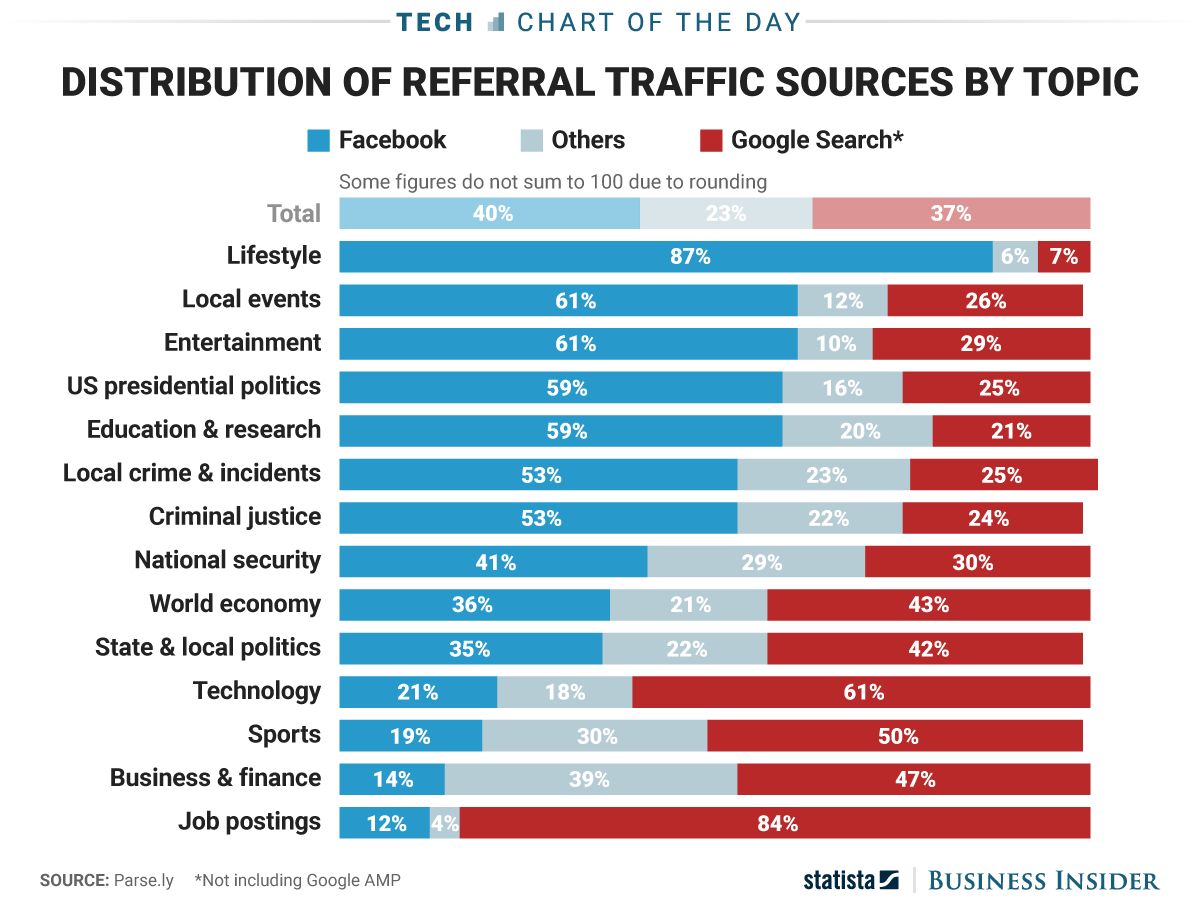CHART OF THE DAY: Which matters more, Google or Facebook?
Apologies for not being more clear on the question in the post title, a better way to phrase it would be this:
Which source send the most/best referral traffic to your online content - Google or Facebook?
The answer, and the consultant in me loves this, is really 'It depends.'
And what it depends on is the kind/type of content you are publishing, and is the subject of today's Chart of the Day.
As always, and by popular demand, first the data, then some pithy, wise, and FREE comments from me:
Here goes...

Interesting, no?
(Let's pretend it is interesting and proceed).
1. I have to admit being a little surprised at the edge Facebook has over Google as a source of referral traffic for many of these categories. This surprise is driven and clouded by my own personal media consumption habits I guess. I would never imagine using or relying on Facebook as a source of information for anything other than family/close friend news. And I barely use it for that. Said differently, it is a good reminder that the way you/me consume content may not be the way most people consume content. I barely use Facebook, but I have to remember most of the rest of the world does.
2. If you are pushing any kind of mainstream, general consumption type content, and you care about how many folks consume said content, you might need to think more about how you can up your presence/reach on Facebook, and maybe be a little less concerned about SEO, (which you never really understood anyway, but that is another story).
3. BUT... Take a look at the last content category on the above chart - Job postings. In this category Google still dominates with 7x the referral traffic as Facebook. And it even dominates 'other' (sorry other). It seems like if you are in the Recruiting business you still do need to worry about SEO after all. And you probably need to get a handle of what Google is up to with its recent and early forays into the recruiting and job search space.
This is totally fascinating data I think. And a reminder that job postings are not (yet) the same as the rest of the content on the internet. People look for them, and find them, much, much differently than many of the other forms of content that are all over your Facebook feed.
Interesting stuff for sure.
Have a great week!
 Chart of the Day tagged
Chart of the Day tagged  HR,
HR,  Recruiting,
Recruiting,  chart,
chart,  data,
data,  media,
media,  referrals
referrals  Email Article
Email Article 
 Print Article
Print Article 

